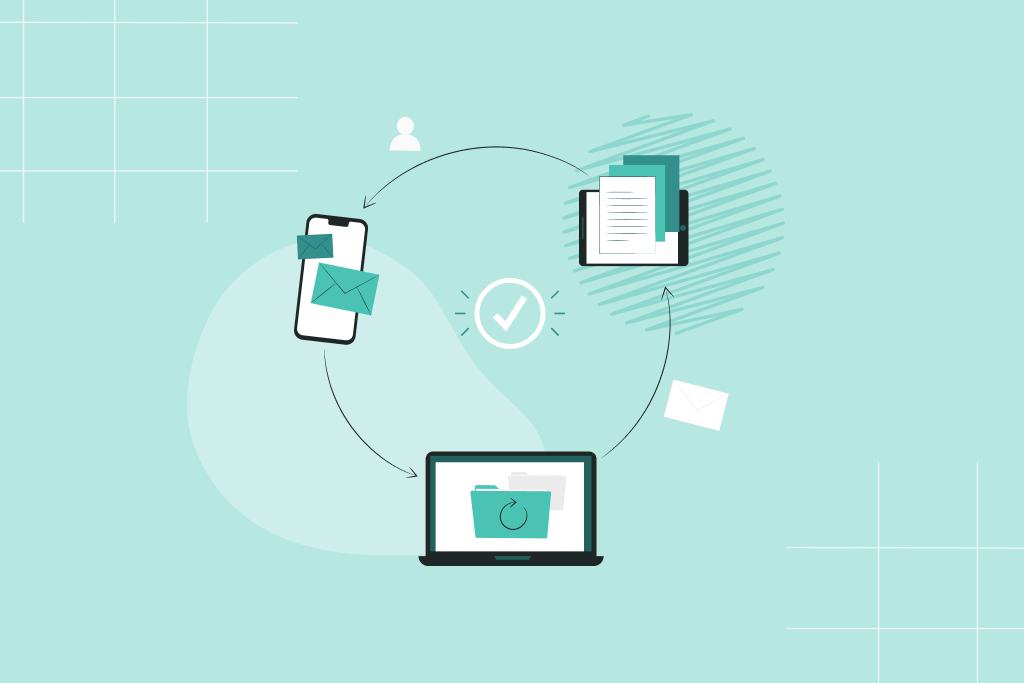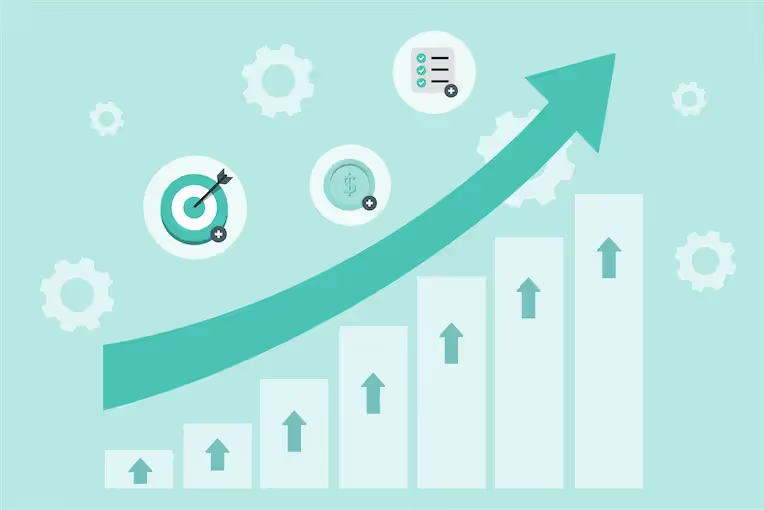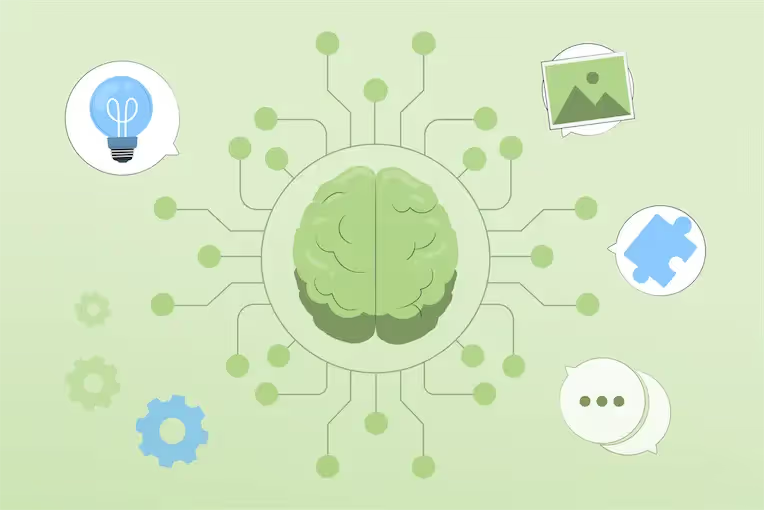Introduction
The HR technology space is a busy one. There are so many solutions available to help payroll and HR professionals manage everything from recruiting and talent acquisition to payroll and benefits administration. But, it can be overwhelming to sift through all the reviews and information available on vendor and third-party sites.
If you’re looking for information on HR solutions and don’t know where to start, you’ve come to the right place. We’ve compiled all our helpful resources on human capital management (HCM) in this article: HCM: Everything You Need to Know.
We understand it’s a lot of information, but if you already know what you’re looking for, feel free to click a link below to jump to the relevant section 👇:
- What is HCM software?
- What is the difference between HCM and HRIS?
- 6 benefits of an HCM solution
- 9 signs it’s time for a new HCM solution
- How to find the right HCM solution
- Getting buy-in for HCM software
- Tips for HR technology change management
Have a question we didn’t cover here? Contact us to let us know! We’re happy to answer any questions about HR technology and finding the right solution for your organization.
What is human capital management (HCM) software?
HCM stands for human capital management, a technology tool that stores and processes organization-wide employee data, providing everything you need to manage your employees from hire to retire.
An HCM system makes organizational data accessible and simplifies complex payroll and HR processes while keeping your people at the forefront. Payroll and HR already work in tandem in your organization, so it only makes sense to integrate these two critical functions into one easy-to-use system.
Here are a few essential functionalities an HCM system provides:
- Recruitment & onboarding: Manage the recruitment process, from interviews to managing job descriptions, using an applicant tracking system (ATS)
- Workflows: Build automated workflows to reduce manual tasks and heighten productivity
- Payroll & benefits administration: Process payroll and manage employee benefits
- Compensation management: Manage employee compensation, from salary to overtime pay
- Scheduling: Create schedules that account for availability, vacation days, sick days, shift eligibility, and more
- Absence and leave management: Effectively manage employee absences, whether planned or unplanned
- Self-service: Give employees the capacity to manage, edit, and update their own information
- Training: Provide continuous training to your employees and encourage the development of new skills
- Performance appraisals: Real-time employee performance assessment
What is the difference between HCM and HRIS?
HCM or HRIS? While HCM and HRIS are often used interchangeably, they are not the same. Understanding the differences between these two types of software is important, as each plays a distinct role in managing human capital within an organization.
Here’s a quick definition and overview of these HR solutions:
Human resources information system (HRIS): Is used for data entry, tracking, and managing all HR operations. HRIS systems are designed to automate day-to-day HR tasks and streamline employee data management, including payroll, benefits, performance reviews, and training records, making HRIS primarily a data-management-focused software.
Human capital management (HCM): Focuses on managing employees throughout their entire lifecycle. It's a complete suite, encompassing HRIS functionalities and beyond, offering additional tools and features that focus on macro-level processes and people strategies, such as scheduling, enhancing employee engagement, fostering career development, and boosting overall productivity.
6 benefits of an HCM solution
There are a lot more benefits to HCM than just these, but for the sake of brevity, we’ve come up with a list of the top six benefits for you and your team.
An HCM solution should benefit everyone in your organization, giving you all easier (and more secure) access to critical information, speeding up and simplifying complex payroll and HR processes, and giving you more time back in your day to focus on the work that matters most.
Here are the top six benefits of HCM software:
- Reduces repetitive tasks: With an integrated solution, your HR, payroll, and workforce management systems are streamlined – enter data once and only once, and it’s shared across all relevant platforms. Uninterrupted data flow and reduced redundancy mean saved time, so your employees can focus on strategic HR and payroll initiatives instead.
- Data accuracy: Ensuring data accuracy and consistency is essential. One mistake and an employee on your payroll team could face the consequences. An integrated system with seamless data flow is your best bet to maintain data integrity. After you enter key information, it’ll automatically upload and reflect in all locations, reducing errors significantly and giving you peace of mind.
- A single source of truth: In the same vein, a single source of truth not only improves data accuracy but security too. With so many critical organization-wide decisions dependent on data, it’s essential that it’s accurate, stored safely, and easily accessible.
- Efficient reporting: With an integrated HCM solution you don’t need to spend hours copying data from one system to another to build reports. Instead, you can pull valuable insights from your combined payroll and HR database and business intelligence tools simultaneously to create comprehensive reports, skipping the hassle of sourcing data from separate systems.
- Easy access: When everything is easily accessible, everyone is happy. Compensation history, personal data, self-service, and single-sign-on empowers your employees to access and update their information efficiently. Plus, any changes employees make on their end are automatically shown throughout your HCM system, putting an end to back and forth emails about address changes, tax slips or pay statement requests.
- Compliance: Maintaining compliance is a very underrated benefit of HCM. The nice thing about an integrated system is that automated processes provide an easily accessible audit trail and are up-to-date on the latest legislation and tax updates across all systems. With documents easily accessible and within reach, submitting and remitting is a breeze.
With an integrated HCM system, your most time-consuming tasks are automated and synced together to make your job easier and transform the way you work. If you’re not seeing these benefits with your current solution, it might be time to rethink your technology.
9 signs it’s time for a new HCM solution
When the relationship between you and your payroll provider isn’t working anymore, it might be time to move on. Easier said than done, right? Going your separate ways is hard to do when the software you use impacts critical payroll and HR processes, but staying with a solution that doesn’t meet your needs can do more harm than good in the long run.
Here are nine signs it’s time for a new HCM solution:
- Outdated technology: Just like a car you’ve outgrown or an inefficient appliance — sometimes a system just can’t keep up with your needs anymore. When your solution can’t integrate with your other systems, it’s probably best to move onto an HCM system with fully integrated features — so you can easily manage your data anywhere and at any time.
- Lack of functionality: If you’ve been using your current solution for years without improvements in features and functionality — such as reporting or integrated time tracking — your system may not be capable of efficiently managing your payroll and people needs. Consider partnering with an HCM provider that offers greater flexibility and scalability to support your growth.
- Hard to Use: If you’re receiving complaints from your team and feeling frustrated by inadequate support from your vendor, it’s time to find a provider that offers a complete package. You deserve modern functionality and responsive client care. After all, you spend a significant portion of your time at work—you need the right tools you can rely on.
- Lack of support: Frustrating client support experiences mean you’re probably not getting the answers or the help you need to get your work done in a timely and efficient manner. Switch to a provider that cares about your time and has the expertise to assist you with any challenge.
- Fee fatigue: When you signed on with your current provider, you may not have realized how many extra costs you would incur. If you’re paying extra every month for basic services like off-cycle pay runs and reporting, consider exploring an all-inclusive pricing solution. Also, If you find you’re frequently being charged fees for additional services your organization doesn’t need, your probably paying for a payroll and HR system that’s not meant for you.
- Errors on repeat: Mistakes happen, but they also cost a lot of money and ruffle employee feathers. If your software keeps contributing to errors over and over again, it could be that it simply can’t handle the complexities of your organization.
- You’re paying too far in advance: When you’re a small or medium-sized business, cash flow matters. Outsourcing remittances means you’re giving up your money sooner than necessary, which can negatively impact your bottom line! One option to consider is moving your payroll in-house. You’ll get more control and keep your funds with you longer.
- Compliance issues: Are you concerned about compliance risks with your current HCM solution? From withholding the correct taxes and deductions to flagging compliance issues related to labour laws, you need a solution that can automate and update based on every legislation change related to your business.
- No mobile offering: Nothing says behind-the-times more than the absence of mobile functionality. If your employees can do their banking or make health appointments from their phone, they should be able to swap shifts or see their pay statements the same way.
If you’re experiencing any of these tell-tale signs and considering a switch, be sure to do your research to find the right fit for your organization. Start by discussing your payroll and HR needs, challenges, and preferences with your leadership team. While breaking up may be difficult, finding your HCM match is worth it in the long run.
How to find the right the right HCM solution
There are plenty of solutions available to help you scale, integrate, and manage your workforce. However, making the switch to a new HCM system can be daunting. By prioritizing a solution that aligns with your unique business needs, you can find the right fit for your organization. Luckily, we’ve got some resources to help you do just that.
The provider you choose is just as important as the technology itself. HCM software impacts all areas of your business, so it’s essential to have a partner who will support you every step of the way, especially when challenges arise.
Here are six considerations to help you get the most out of your tech and your relationship with your vendor:
1. Can you manage the entire employee lifecycle?
When evaluating and selecting an HCM solution, it’s crucial to determine whether your payroll, time and attendance, HR, and talent acquisition features are integrated within the system or if the solution offers standalone payroll and HR modules, each representing a separate database. With a fully integrated solution, all your data flows seamlessly from one module to the next, allowing you to automate time-consuming processes and access actionable insights in seconds. Your data will always be accurate and updated in real-time with any changes or reporting.
2. Do you have robust reporting capabilities?
Reporting is where you’ll get real value in an HCM solution. It provides data insights critical for workforce management and decision-making within your organization. Check to make sure that the data fields you need are reportable.
You should also expect a comprehensive library of out-of-the-box reports and the ability to easily create custom reports. Being able to schedule the delivery of reports to your executive and management teams will save you time and streamline your processes.
3. Can you tailor the system to meet your needs?
Your organization is unique, so be sure to look for a solution that can be configured to meet your specific business processes and requirements. Ensure your implementation includes a process review, configuration that streamlines and automates your workflows, data conversion, a comprehensive training program, and rigorous testing of the solution before it goes live.
4. Is the solution intuitive and easy to use?
Another important consideration is usability. Can your entire team navigate the solution with ease? From super users in Payroll and HR to managers and employees using the self-service portal, it’s crucial that the interface is intuitive and easy to learn. For your new solution to be effective, your team must actively use it to enhance communication and collaboration across your organization.
5. Will your HCM provider offer you the support you need?
When choosing an HCM solution, you're also investing in a long-term relationship with the vendor. Look for a vendor that has industry experience and knowledge. Do they specialize in Canadian payroll? Can they provide in-house payroll support?
Ensure they offer a scalable solution that receives routine updates at no additional cost. Check references and confirm where your data will be housed and who owns it. Finally, seek a partner who will collaborate with you to tackle the complex tasks and challenges unique to Canadian legislation, helping you simplify them with practical solutions.
6. Do they offer inclusive PEPM pricing?
A new HCM software can be a big investment. You want to know that you can budget for your software appropriately and there won’t be significant variations or unwanted surprises from month to month.
There’s nothing worse than getting a software demo and loving the product only to be disappointed during the negotiation stage when there are all these additional hidden fees. Check that your provider offers a per employee per month (PEPM) for all the modules you’re interested in. Ask about implementation fees and support fees. Also, be sure to double-check that features like custom reports or API endpoint access don’t come at a premium price.
For a more in-depth guide to finding the right HR technology for your business, check out our Complete Buyer’s Guide for HCM Software.
Getting buy-in for HCM software
Once you’ve identified the need for a new HCM software, it’s time to secure buy-in from your internal stakeholders. This may include your President or CEO, the head of the Finance team, your HR leader, and your payroll administrator, depending on the size of your organization.
An HCM system provides countless benefits to your organization, but it’s a team effort toward greater efficiency. Here are some key ways to get your team involved and on board:
- Get them involved from day one: From the beginning, include at least one stakeholder from each key group: Payroll, HR, Finance, IT, management, and employees. Everyone using the solution should feel included and know they have a voice in communicating what’s important to them in a new solution.
- Identify an HCM champion: While all your stakeholders will act as champions for this project, it’s important to have a primary point of contact. This individual will play a crucial role in finding a new HCM solution. They will typically serve as the project manager during the evaluation process, collect feedback from the team, liaise with vendors, and once a vendor is selected, be the main point of contact for implementation. Usually, your champion will be a key power user of the system.
- Consider different insights: Each of your stakeholders will bring valuable information from their areas of expertise to the selection process. When looking for new HCM software, consider asking the following to help build your business case:
- What do their current processes look like, what is working well, and what could be improved?
- What areas could yield time and cost savings?
- Which features or functions would benefit the organization and increase efficiency?
- What past experiences and lessons learned do they have from other software selection processes?
- Identify what matters most to each team: Before you begin the selection process, it’s crucial to understand your needs. However, what matters to one department may not be as important to another, so it’s essential to identify both nice-to-haves and must-haves for each stakeholder.
If you’ve just started your search for a new HCM solution and you’re looking for tips on how to communicate the unique benefits to your team, check out our guide on how to build a compelling business case to secure buy-in from key decision-makers within your organization.
Tips for HR technology change management
Change is hard, but that isn’t stopping businesses from looking at new ways of gaining efficiency. More and more organizations are looking to invest in HR technology. Investing in a new HCM system often means changes to existing processes, learning new technology, and encouraging adoption across the organization. It can be a steep learning curve, but the benefits far outweigh the challenges.
Here are some change management tips to position you and your team for success as you embark on your search for a new HCM solution:
- Document the current state of your HR solution: Focus on processes that are inefficient, could be automated, and are not helping the organization meet its goals.
- Document the future state of your HR solution: Focus on processes you want to change and discuss what the change might look like. What are the expected benefits?
- Build a roadmap: Describe the steps you’ll take to get from your current state to your future state. Include phases of the plan, resource requirements, and timing. Lean on diagrams to help communicate this plan clearly to the entire team.
- Create a why statement: Have a “why change” statement that articulates the positive impact this change will have. You can lean on this to reinforce your decision to search for a new HCM solution and communicate why the change is worthwhile. It’ll help you see the forest for the trees.
- Identify your champions: This should involve key members of each department or group involved in the search, leaders within your organization, and people who will champion the project. Ensure each member is reflective of your entire company so everyone who has a stake in the project is involved.
- Create a communication plan: Outline how you will communicate updates to your organization so that everyone is kept in the loop and feels engaged.
- Collect feedback: Provide dedicated channels for feedback from user groups within your organization, including power users, senior leadership, managers, and employees. This will help you identify and address challenges, training issues, and roadblocks quickly.
- Update the executive team: Ensure you attend or schedule a meeting with your leadership team to give them regular updates, respond to questions about the project and technology, facilitate change management efforts, and celebrate project milestones.
- Attend department meetings: You should also attend meetings with department leaders to help support managers as they introduce the solution to their teams.
- Provide a comprehensive training plan: The best way to drive adoption across your organization is to ensure everyone using the solution, knows how it works, and feels comfortable with the new processes.
- Complete your testing phase: Plan to go through a testing phase with your vendor before going live to ensure everything is working as it should. This will save you a lot of trouble in the long run.
- Go live and celebrate! Implementing a new HCM solution is no small undertaking. Be sure to schedule a celebration once you go live and thank everyone for their commitment to the project.
Conclusion
Choosing the right HCM solution is one of the most important decisions an organization can make. It impacts everyone, from Payroll and Human Resources to Finance, management, and even employees. With such an important decision, it’s essential to prioritize finding a platform that brings your team together and enhances processes and communication.
If you have any questions during your search, feel free to contact us! We’re more than happy to review your organization’s current processes and show you how an HCM system could benefit your organization. In the meantime, here are some other resources to help you.
Additional resources:
Your ultimate guide to choosing the right HCM solution
Choosing a new HCM solution is a big decision. Our free guide has everything you need to help kickstart your HCM journey and find the perfect solution for your organization!





.png)

